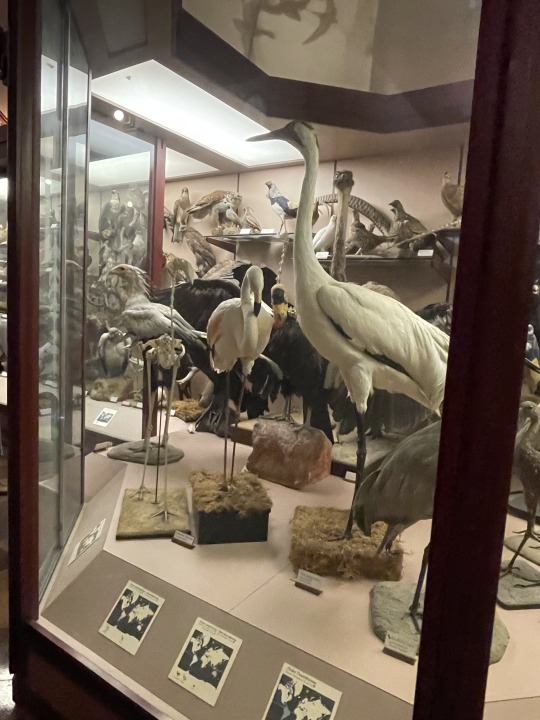#New-Era-of-Digital-Marketing
Text
The New Era of Digital Marketing

In 2023, digital marketing had a broad scope for every business, and online marketing plays a vital role in small to large-scale enterprises. Likewise, today the trend of Chatbots, artificial intelligence, and more tech-savvy ways are the prominent partners of this marketing. If you are looking for the best Digital Marketing Service Provider in USA, thinkunitedservices.com is the perfect choice for your business.
In addition, in modern times, we conduct searches with our voices through visual search, which are all part of the new digital age. According to ComScore, 50 percent of searches will be conducted via speech by 2020, based on Siri, Alexa, and Google Home data.
What have recent surveys shown for the digital marketing scope in 2023?
Marketing trends change daily and have continuous growth in their techniques and strategies. Similarly, A recent survey shows that Expanded Text Ads (ETAs) will be removed from Google in 2023, impacting your paid search marketing efforts.
According to Google, this change is due to companies moving to Responsive Search Ads (RSA) instead of using their ad interests. Generally, several companies offer digital marketing services in New York, and Similarly, the Think United Services agency is one of them.
Further, the experts in online marketing share fresh data that evaluates every point to run successful digital marketing-
Delivering outstanding client experiences – 35%
Marketing and sales efforts should be aligned – 32%
Audience segmentation and targeting – 32%
Scalability of programs, content, and personalization – 31%
Similarly, approximately 66% of marketers predict revenue growth in 2023 and beyond. However, 90% of professionals believe 2020 assisted in increasing digital dealings, which is expected to continue well into 2022 as its trend and techniques also grow.
Similarly, if you are looking for digital marketing services near me, Think United Services agency is here. Aside from that, digital marketing is the foundation of today’s enterprises, and we can’t grow a business without employing cutting-edge techniques and online advertising.
How does digital marketing set your business apart from the crowd?
There are trillions of businesses nowadays, including small, medium, and large scale. Likewise, every enterprise has its tendency to work and grow. Therefore, digital marketing is a milestone for developed industries.
Similarly, a good company also drafts an outlook for your business and ensures it validates growth within a short period. In short, social media is an incredible part of how online marketing makes your business viral.
If we talk about top-notch digital marketing services in New York, then the thinkunitedservices.com website is the right destination for you. You can contact us directly here via call, message, or email.
Conclusion:
Digital marketing, on the other hand, is a data-driven market in which we target our audience and retarget previous ones. Similarly, profitable techniques are implemented using regenerated customer data from the web.
Further, a company’s long-term growth depends on the organic traffic of a top-ranking website. Therefore, Think United Services agency is the right path for you. We offer reliable, reasonable, and tech-savvy Digital Marketing Company in USA and other states of the USA.
Source: https://thinkunitedservices.com/the-new-era-of-digital-marketing/
#ThinkUnitedServices#itservicescmpany#digitalmarketingagency#SEO#SMO#PPC#webdesigning#New-Era-of-Digital-Marketing
1 note
·
View note
Text
Digital Marketing: Unleashing the Power of the Digital Era
In the ever-evolving landscape of the 21st century, one phenomenon has truly revolutionized the way businesses connect with their audiences and achieve their goals: digital marketing. As the internet continues to permeate every aspect of our lives, from social interactions to shopping habits, the role of traditional marketing strategies has evolved to embrace the vast opportunities offered by the digital realm. In this article, we will explore the world of digital marketing, its key components, and the impact it has on businesses in the modern age.

Understanding Digital Marketing:
Digital marketing encompasses a wide range of online strategies and tactics that aim to promote products, services, or brands to a target audience through various digital channels. These channels include, but are not limited to, search engines, social media platforms, email, websites, mobile apps, and online advertising networks. The goal of digital marketing is not only to increase brand awareness but also to drive traffic, generate leads, boost sales, and ultimately foster customer loyalty.
Key Components of Digital Marketing:
Search Engine Optimization (SEO): SEO is the process of optimizing a website to rank higher in search engine results pages (SERPs). By targeting relevant keywords and creating high-quality content, businesses can attract organic traffic and improve their online visibility.
Content Marketing: Content is the backbone of digital marketing. By producing valuable and engaging content in the form of blog posts, articles, videos, infographics, and more, businesses can establish authority, build trust with their audience, and drive traffic to their websites.
Social Media Marketing: Social media platforms have become virtual marketplaces where businesses can directly engage with their audience. By creating compelling content and running targeted ads, companies can reach potential customers and build a loyal following.
Email Marketing: Despite the rise of new communication channels, email marketing remains a powerful tool for reaching potential and existing customers directly. Personalized and relevant email campaigns can drive conversions and foster customer loyalty.
Pay-Per-Click Advertising (PPC): PPC advertising allows businesses to display ads on search engines and other online platforms. Advertisers only pay when a user clicks on their ad, making it a cost-effective way to reach a targeted audience.
Influencer Marketing: Leveraging the reach and influence of popular social media personalities and content creators, businesses can tap into new audiences and gain credibility through influencer endorsements.
Analytics and Data Insights: Digital marketing provides businesses with extensive data and analytics. By analyzing user behavior, engagement, and conversion metrics, companies can refine their strategies and make data-driven decisions.

The Impact of Digital Marketing on Businesses:
The digital age has given rise to a consumer base that is more informed, connected, and discerning than ever before. Here's how digital marketing has transformed the business landscape:
Global Reach: With the internet's global nature, businesses can reach audiences across the world, breaking down geographical barriers and expanding their market reach exponentially.
Cost-Effectiveness: Digital marketing often proves to be more cost-effective than traditional marketing. Small businesses and startups can compete on a level playing field with larger companies by leveraging the power of digital channels.
Real-Time Communication: Digital marketing facilitates real-time interactions with customers, allowing businesses to address queries, concerns, and feedback promptly. This builds trust and enhances the customer experience.
Targeted Advertising: Digital marketing platforms enable highly targeted advertising, ensuring that businesses can reach their ideal customers with precision. This helps to maximize the return on investment (ROI) of marketing campaigns.
Measurable Results: Unlike traditional marketing, digital marketing efforts can be easily measured and analyzed. Businesses can track their campaigns' performance in real-time and adjust strategies accordingly.
The Future of Digital Marketing:
As technology continues to advance, so will the realm of digital marketing. Innovations such as artificial intelligence (AI), augmented reality (AR), virtual reality (VR), and voice search are already impacting the industry. AI-powered chatbots are enhancing customer support, while VR and AR are transforming the way products are showcased. Voice search is changing how users interact with search engines and, consequently, how businesses optimize their content.
However, the core principles of digital marketing will remain constant: understanding the target audience, delivering valuable content, fostering meaningful connections, and adapting to emerging technologies.
In conclusion, digital marketing has revolutionized the way businesses connect with their audience and promote their products and services. Embracing the digital era is no longer an option but a necessity for businesses that seek to thrive in the ever-changing landscape of the modern world. By harnessing the power of digital marketing, companies can unlock unlimited potential, gain a competitive edge, and chart a path to sustainable success in the digital age.
2 notes
·
View notes
Text
Learn SEO Marketing Course For Your Career
Mint Media Solutions is the culmination of creativity, expertise, and young energy.
We continuously succeed in satisfying the needs of our clients who share our innovative approach towards branding and digital marketing.
The creative talent-pool of Mint Media Solutions can build and transform even your faintest ideas into full-fledged innovative strategy.
Mint Media Solutions is one of the best Digital Marketing all-rounders in Mumbai.
It is the culmination of creativity, expertise, and young energy.
1 note
·
View note
Text
New Digital Era: The Best Digital Marketing Institute in Ghaziabad
As the world continues to shift towards digitalization, businesses need to adapt and establish a strong online presence to stay competitive. This has led to a surge in demand for digital marketing professionals who can help businesses achieve their digital marketing goals. In Ghaziabad, the best place to acquire digital marketing skills is the New Digital Era - Institute of Digital Marketing. In this article, we will explore why the New Digital Era is the best digital marketing institute in Ghaziabad.

Expertise of New Digital Era:
The New Digital Era - Institute of Digital Marketing is led by a team of experienced professionals who have a deep understanding of the digital marketing landscape. The trainers at the institute have worked with numerous clients across various industries, providing them with customized digital marketing solutions. This experience gives them a unique perspective that they use to train students and equip them with the skills needed to succeed in the field.
Comprehensive Curriculum:
The institute offers comprehensive courses in various digital marketing disciplines, including SEO, social media marketing, email marketing, PPC advertising, and content marketing. The courses cover the latest industry trends, best practices, and tools to provide students with a holistic learning experience. The curriculum is designed to help students acquire the skills needed to succeed in the job market or start their own digital marketing business.
Hands-on Learning:
The New Digital Era - Institute of Digital Marketing provides students with hands-on learning opportunities through live projects, case studies, and internships. This helps students apply the concepts they learn in the classroom to real-world situations, preparing them for the challenges they may face in their careers. The institute also provides students with access to state-of-the-art facilities, including a modern classroom, a computer lab, and a library.
Placement Assistance:
The New Digital Era - Institute of Digital Marketing offers placement assistance to students by connecting them with potential employers and providing career guidance and support. The institute has a vast network of industry contacts that they leverage to help students secure job opportunities. They also provide career counseling and support to help students achieve their career goals.
Flexibility:
The institute offers flexible learning options, including both online and offline classes, to accommodate the needs of students. This flexibility allows students to balance their studies with their work or other commitments. The institute also offers weekend batches for working professionals who want to acquire digital marketing skills.
Conclusion:
The New Digital Era - Institute of Digital Marketing is the best digital marketing institute in Ghaziabad. Its expertise, comprehensive curriculum, hands-on learning, placement assistance, and flexibility make it the ideal choice for students who want to acquire digital marketing skills. The institute provides students with a holistic learning experience that equips them with the knowledge and skills needed to succeed in the digital marketing field. By enrolling in the New Digital Era Institute of Digital Marketing, students can achieve their career goals and stay ahead of the competition in the digital age.
0 notes
Video
youtube
Pranjal Kukreja | aaztec Complete Digital Solution | Infocomm India 2023...
#youtube#Miss. Pranjal Kukreja | Marketing Consultant | aaztec Complete Digital Solution Welcome To The New Era Of Digital Signage Aaztec Solution's
0 notes
Text
Surveillance pricing

THIS WEEKEND (June 7–9), I'm in AMHERST, NEW YORK to keynote the 25th Annual Media Ecology Association Convention and accept the Neil Postman Award for Career Achievement in Public Intellectual Activity.

Correction, 7 June 2024: The initial version of this article erroneously described Jeffrey Roper as the founder of ATPCO. He benefited from ATPCO, but did not co-found it. The initial version of this article called ATPCO "an illegal airline price-fixing service"; while ATPCO provides information that the airlines use to set prices, it does not set prices itself, and while the DOJ investigated the company, they did not pursue a judgment declaring the service to be illegal. I regret the error.
Noted anti-capitalist agitator Adam Smith had it right: "People of the same trade seldom meet together, even for merriment and diversion, but the conversation ends in a conspiracy against the public, or in some contrivance to raise prices."
Despite being a raving commie loon, Smith's observation was so undeniably true that regulators, policymakers, and economists couldn't help but acknowledge that it was true. The trustbusting era was defined by this idea: if we let the number of companies in a sector get too small, or if we let one or a few companies get too big, they'll eventually start to rig prices.
What's more, once an industry contracts corporate gigantism, it will become too big to jail, able to outspend and overpower the regulators charged with reining in its cheating. Anyone who believes Smith's self-evident maxim had to accept its conclusion: that companies had to be kept smaller than the state that regulated them. This wasn't about "punishing bigness" – it was the necessary precondition for a functioning market economy.
We kept companies small for the same reason that we limited the height of skyscrapers: not because we opposed height, or failed to appreciate the value of a really good penthouse view – rather, to keep the building from falling over and wrecking all the adjacent buildings and the lives of the people inside them.
Starting in the neoliberal era – Carter, then Reagan – we changed our tune. We liked big business. A business that got big was doing something right. It was perverse to shut down our best companies. Instead, we'd simply ban big companies from rigging prices. This was called the "consumer welfare" theory of antitrust. It was a total failure.
40 years later, nearly every industry is dominated by a handful of companies, and these companies price-gouge us with abandon. Worse, they use their gigantic ripoff winnings to fill war-chests that fund the corruption of democracy, capturing regulators so that they can rip us off even more, while ignoring labor, privacy and environmental law and ducking taxes.
It turns out that keeping gigantic, opaque, complex corporations honest is really hard. They have so many ways to shuffle money around that it's nearly impossible to figure out what they're doing. Digitalization makes things a million times worse, because computers allow businesses to alter their processes so they operate differently for every customer, and even for every interaction.
This is Dieselgate times a billion: VW rigged its cars to detect when they were undergoing emissions testing and switch to a less polluting, more compliant mode. But when they were on the open road, they spewed lethal quantities of toxic gas, killing people by the thousands. Computers don't make corporate leaders more evil, but they let evil corporate leaders execute far more complex and nefarious plans. Digitalization is a corporate moral hazard, making it just too easy and tempting to rig the game.
That's why Toyota, the largest car-maker in the world, just did Dieselgate again, more than a decade later. Digitalization is a temptation no giant company can resist:
https://www.bbc.com/news/articles/c1wwj1p2wdyo
For forty years, pro-monopoly cheerleaders insisted that we could allow companies to grow to unimaginable scale and still prevent cheating. They passed rules banning companies from explicitly forming agreements to rig prices. About ten seconds later, new middlemen popped up offering "information brokerages" that helped companies rig prices without talking to one another.
Take Agri Stats: the country's hyperconcentrated meatpacking industry pays Agri Stats to "consult on prices." They provide Agri Stats with a list of their prices, and then Agri Stats suggests changes based on its analysis. What does that analysis consist of? Comparing the company's prices to its competitors, who are also Agri Stats customers:
https://pluralistic.net/2023/10/04/dont-let-your-meat-loaf/#meaty-beaty-big-and-bouncy
In other words, Agri Stats finds the highest price for each product in the sector, then "advises" all the companies with lower prices to raise their prices to the "competitive" level, creating a one-way ratchet that sends the price of food higher and higher.
More and more sectors have an Agri Stats, and digitalization has made this price-gouging system faster, more efficient, and accessible to sectors with less concentration. Landlords, for example, have tapped into Realpage, a "data broker" that the same thing to your rent that Agri Stats does to meat prices. Realpage requires the landlords who sign up for its service to accept its "recommendations" on minimum rents, ensuring that prices only go up:
https://popular.info/p/feds-raid-corporate-landlord-escalating
Writing for The American Prospect, Luke Goldstein lays out the many ways in which these digital intermediaries have supercharged the business of price-rigging:
https://prospect.org/economy/2024-06-05-three-algorithms-in-a-room/
Goldstein identifies a kind of patient zero for this ripoff epidemic: Jeffrey Roper, a former Alaska Air exec who benefited from a service that helps airlines set prices. ATPCO was investigated by the DOJ in the 1990s, but the enforcers lost their nerve and settled with the company, which agreed to apply some ornamental fig-leafs to its collusion-machine. Even those cosmetic changes were seemingly a bridge too far Roper, who left the US.
But he came back to serve as Realpage's "principal scientist" – the architect of a nationwide scheme to make rental housing vastly more expensive. For Roper, the barrier to low rents was empathy: landlords felt stirrings of shame when they made shelter unaffordable to working people. Roper called these people "idiots" who sentimentality "costs the whole system."
Sticking a rent-gouging computer between landlords and the people whose lives they ruin is a classic "accountability sink," as described in Dan Davies' new book "The Unaccountability Machine: Why Big Systems Make Terrible Decisions – and How The World Lost its Mind":
https://profilebooks.com/work/the-unaccountability-machine/
It's a form of "empiricism washing": if computers are working in the abstract realm of pure numbers, they're just moving the objective facts of the quantitative realm into the squishy, imperfect qualitative world. Davies' interview on Trashfuture is excellent:
https://trashfuturepodcast.podbean.com/e/fire-sale-at-the-accountability-store-feat-dan-davies/
To rig prices, an industry has to solve three problems: the problem of coming to an agreement to fix prices (economists call this "the collective action problem"); the problem of coming up with a price; and the problem of actually changing prices from moment to moment. This is the ripoff triangle, and like a triangle, it has many stable configurations.
The more concentrated an industry is, the easier it is to decide to rig prices. But if the industry has the benefit of digitalization, it can swap the flexibility and speed of computers for the low collective action costs from concentration. For example, grocers that switch to e-ink shelf tags can make instantaneous price-changes, meaning that every price change is less consequential – if sales fall off after a price-hike, the company can lower them again at the press of a button. That means they can collude less explicitly but still raise prices:
https://pluralistic.net/2024/03/26/glitchbread/#electronic-shelf-tags
My name for this digital flexibility is "twiddling." Businesses with digital back-ends can alter their "business logic" from second to second, and present different prices, payouts, rankings and other key parts of the deal to every supplier or customer they interact with:
https://pluralistic.net/2023/02/19/twiddler/
Not only does twiddling make it easier to rip off suppliers, workers and customers, it also makes these crimes harder to detect. Twiddling made Dieselgate possible, and it also underpinned "Greyball," Uber's secret strategy of refusing to send cars to pick up transportation regulators who would then be able to see firsthand how many laws the company was violating:
https://www.nytimes.com/2017/03/03/technology/uber-greyball-program-evade-authorities.html
Twiddling is so easy that it has brought price-fixing to smaller companies and less concentrated sectors, though the biggest companies still commit crimes on a scale that put these bit-players to shame. In The Prospect, David Dayen investigates the "personalized pricing" ripoff that has turned every transaction into a potential crime-scene:
https://prospect.org/economy/2024-06-04-one-person-one-price/
"Personalized pricing" is the idea that everything you buy should be priced based on analysis of commercial surveillance data that predicts the maximum amount you are willing to pay.
Proponents of this idea – like Harvard's Pricing Lab with its "Billion Prices Project" – insist that this isn't a way to rip you off. Instead, it lets companies lower prices for people who have less ability to pay:
https://thebillionpricesproject.com/
This kind of weaponized credulity is totally on-brand for the pro-monopoly revolution. It's the same wishful thinking that led regulators to encourage monopolies while insisting that it would be possible to prevent "bad" monopolies from raising prices. And, as with monopolies, "personalized pricing" leads to an overall increase in prices. In econspeak, it is a "transfer of wealth from consumer to the seller."
"Personalized pricing" is one of those cuddly euphemisms that should make the hair on the back of your neck stand up. A more apt name for this practice is surveillance pricing, because the "personalization" depends on the vast underground empire of nonconsensual data-harvesting, a gnarly hairball of ad-tech companies, data-brokers, and digital devices with built-in surveillance, from smart speakers to cars:
https://pluralistic.net/2024/03/12/market-failure/#car-wars
Much of this surveillance would be impractical, because no one wants their car, printer, speaker, watch, phone, or insulin-pump to spy on them. The flexibility of digital computers means that users always have the technical ability to change how these gadgets work, so they no longer spy on their users. But an explosion of IP law has made this kind of modification illegal:
https://locusmag.com/2020/09/cory-doctorow-ip/
This is why apps are ground zero for surveillance pricing. The web is an open platform, and web-browsers are legal to modify. The majority of web users have installed ad-blockers that interfere with the surveillance that makes surveillance pricing possible:
https://doc.searls.com/2023/11/11/how-is-the-worlds-biggest-boycott-doing/
But apps are a closed platform, and reverse-engineering and modifying an app is a literal felony – several felonies, in fact. An app is just a web-page skinned with enough IP to make it a felony to modify it to protect your consumer, privacy or labor rights:
https://pluralistic.net/2024/05/07/treacherous-computing/#rewilding-the-internet
(Google is leading a charge to turn the web into the kind of enshittifier's paradise that apps represent, blocking the use of privacy plugins and proposing changes to browser architecture that would allow them to felonize modifying a browser without permission:)
https://pluralistic.net/2023/08/02/self-incrimination/#wei-bai-bai
Apps are a twiddler's playground. Not only can they "customize" every interaction you have with them, but they can block you (or researchers seeking to help you) from recording and analyzing the app's activities. Worse: digital transactions are intimate, contained to the palm of your hand. The grocer whose e-ink shelf-tags flicker and reprice their offerings every few seconds can be collectively observed by people who are in the same place and can start a conversation about, say, whether to come back that night a throw a brick through the store's window to express their displeasure. A digital transaction is a lonely thing, atomized and intrinsically shielded from a public response.
That shielding is hugely important. The public hates surveillance pricing. Time and again, through all of American history, there have been massive and consequential revolts against the idea that every price should be different for every buyer. The Interstate Commerce Commission was founded after Grangers rose up against the rail companies' use of "personalized pricing" to gouge farmers.
Companies know this, which is why surveillance pricing happens in secret. Over and over, every day, you are being gouged through surveillance pricing. The sellers you interact with won't tell you about it, so to root out this practice, we have to look at the B2B sales-pitches from the companies that sell twiddling tools.
One of these companies is Plexure, partly owned by McDonald's, which provides the surveillance-pricing back-ends for McD's, Ikea, 7-Eleven, White Castle and others – basically, any time a company gives you a hard-sell to order via its apps rather than its storefronts or its website, you should assume you're getting twiddled, hard.
These companies use the enshittification playbook to trap you into using their apps. First, they offer discounts to customers who order through their apps – then, once the customers are fully committed to shopping via app, they introduce surveillance pricing and start to jack up the prices.
For example, Plexure boasts that it can predict what day a given customer is getting paid on and use that information to raise prices on all the goods the customer shops for on that day, on the assumption that you're willing to pay more when you've got a healthy bank balance.
The surveillance pricing industry represents another reason for everything you use to spy on you – any data your "smart" TV or Nest thermostat or Ring doorbell can steal from you can be readily monetized – just sell it to a surveillance pricing company, which will use it to figure out how to charge you more for everything you buy, from rent to Happy Meals.
But the vast market for surveillance data is also a potential weakness for the industry. Put frankly: the commercial surveillance industry has a lot of enemies. The only thing it has going for it is that so many of these enemies don't know that what's they're really upset about is surveillance.
Some people are upset because they think Facebook made Grampy into a Qanon. Others, because they think Insta gave their kid anorexia. Some think Tiktok is brainwashing millennials into quoting Osama bin Laden. Some are upset because the cops use Google location data to round up Black Lives Matter protesters, or Jan 6 insurrectionists. Some are angry about deepfake porn. Some are angry because Black people are targeted with ads for overpriced loans or colleges:
https://www.theregister.com/2024/06/04/meta_ad_algorithm_discrimination/
And some people are angry because surveillance feeds surveillance pricing. The thing is, whatever else all these people are angry about, they're all angry about surveillance. Are you angry that ad-tech is stealing a 51% share of news revenue? You're actually angry about surveillance. Are you angry that "AI" is being used to automatically reject resumes on racial, age or gender grounds? You're actually angry about surveillance.
There's a very useful analogy here to the history of the ecology movement. As James Boyle has long said, before the term "ecology" came along, there were people who cared about a lot of issues that seemed unconnected. You care about owls, I care about the ozone layer. What's the connection between charismatic nocturnal avians and the gaseous composition of the upper atmosphere? The term ecology took a thousand issues and welded them together into one movement.
That's what's on the horizon for privacy. The US hasn't had a new federal consumer privacy law since 1988, when Congress acted to ban video-store clerks from telling the newspapers what VHS cassettes you were renting:
https://en.wikipedia.org/wiki/Video_Privacy_Protection_Act
We are desperately overdue for a new consumer privacy law, but every time this comes up, the pro-surveillance coalition defeats the effort. but as people who care about conspiratorialism, kids' mental health, spying by foreign adversaries, phishing and fraud, and surveillance pricing all come together, they will be an unbeatable coalition:
https://pluralistic.net/2023/12/06/privacy-first/#but-not-just-privacy
Meanwhile, the US government is actually starting to take on these ripoff artists. The FTC is working to shut down data-brokers:
https://pluralistic.net/2023/08/16/the-second-best-time-is-now/#the-point-of-a-system-is-what-it-does
The FBI is raiding landlords to build a case against Frontpage and other rent price-fixers:
https://popular.info/p/feds-raid-corporate-landlord-escalating
Agri Stats is facing a DoJ lawsuit:
https://www.nationalhogfarmer.com/market-news/agri-stats-loses-motions-to-transfer-dismiss-in-doj-antitrust-case
Not every federal agency has gotten the message, though. Trump's Fed Chairman, Jerome Powell – whom Biden kept on the job – has been hiking interest rates in a bid to reduce our purchasing power by making millions of Americans poorer and/or unemployed. He's doing this to fight inflation, on the theory that inflation is being cause by us being too well-off, and therefore trying to buy more goods than are for sale.
But of course, interest rates are inflationary: when interest rates go up, it gets more expensive to pay your credit card bills, lease your car, and pay a mortgage. And where we see the price of goods shooting up, there's abundant evidence that this is the result of greedflation – companies jacking up their prices and blaming inflation. Interest rate hawks say that greedflation is impossible: if one company raises its prices, its competitors will swoop in and steal their customers with lower prices.
Maybe they would do that – if they didn't have a toolbox full of algorithmic twiddling options and a deep trove of surveillance data that let them all raise prices together:
https://prospect.org/blogs-and-newsletters/tap/2024-06-05-time-for-fed-to-meet-ftc/
Someone needs to read some Adam Smith to Chairman Powell: "People of the same trade seldom meet together, even for merriment and diversion, but the conversation ends in a conspiracy against the public, or in some contrivance to raise prices."

If you'd like an essay-formatted version of this post to read or share, here's a link to it on pluralistic.net, my surveillance-free, ad-free, tracker-free blog:
https://pluralistic.net/2024/06/05/your-price-named/#privacy-first-again

Image:
Cryteria (modified)
https://commons.wikimedia.org/wiki/File:HAL9000.svg
CC BY 3.0
https://creativecommons.org/licenses/by/3.0/deed.en
#pluralistic#david dayen#the american prospect#surveillance advertising#commercial surveillance#predictive pricing#monopolism#monopolies#antitrust#unfair and deceptive method of competition#ftc act Section 5#ftca5#ripoffs#surveillance#twiddling#ip#apps#apps are shit#ziprecruiter#personalized pricing#price gouging#just and reasonable#interstate commerce act#one person one price#surveillance pricing#privacy first#billion prices project#ecommerce#ninetailed#cortado group
420 notes
·
View notes
Text
I watched two documentaries recently that were very "2000's nerd culture" which I thought were very fun! In like a meta way as cultural commentary, of course, it is me after all. The first was Indie Game: The Movie, a 2012 documentary on the making Braid, Super Meat Boy, and Fez. It is a "creator-focused" documentary and in particular for the latter two games the film crew actually filmed them mid-production & release, which does make for some authentically heartfelt scenes.
So in a certain sense all eras of documentary will contain this, but the 2000's going into the 2010's was absolutely rife with a new wave of films, often supported by crowdsourcing funds like Indie Game was, primarily concerned with the self-legitimization of niche subcultures. By creating something cohesive, academic, and prestigious like a documentary, the film can codify the subculture as "real" and "worthy", and additionally lend credence to narratives about the subculture that have grown prevalent. And to be clear, this is not a criticism, even if there are parts that are - all meaning and identity is forged in similar ways. But for nerd culture in the 2000's, there was a particularly intense need for this process, because this was the era of nerdom going mainstream. That level of culture shift generated demand for all the above, which films like this aim to supply. There were lot of films of this type - we made a brony "documentary" propaganda film guys, nothing was exempt.
Indie Game is overwhelmingly the story of outsider artists bleeding and dying for their art, which will triumph above all odds. And it leans, heavily, into the bleed; at one point Phil Fish (creator of Fez), openly states he might commit suicide if his game fails. Much screen time is spent on personal sacrifice, financial poverty, the "doubters", etc. This is of course a classic tale for artists, but if I may be so bold that is something of an easy sell - emotionally, narratively - for someone writing the Great American Novel. It is maybe harder to sell if you are making this?

(Cover art by Bryan Lee O'Malley btw - very era appropriate!) How do we make "dude in hat solves puzzles" worth the Starving Artist life?
We do that by positioning these games not as games, but as paradigms. These games, by dint of being the independent vision of unitary creators, are making games that Big Gaming never could. New digital means of distribution are allowing artists to cut out the middleman of publishers, groups that corrupt the real vision of creators. And with no barriers to development, now anyone (maybe...even you?) can make games that can compete in the big leagues. Indie games through this lens are a different product than mainstream titles, and these creators are opening doors. And their suffering is going to be financially rewarded with success and money to boot! That is the narrative Indie Game is selling to its audience of gamers, to understand why the indie games they bought and loved are meaningful.
And to be clear, as much as I am about to deconstruct this, it isn't like totally false or anything. Starting in the late 2000's digital platforms like Steam, more accessible development tools like Unity (released in 2005), and so on did in fact make smaller games appealing to more niche markets more viable, and by virtue of their nicheness yeah they can do things big budget games maybe can't. These creators absolutely had passionate visions for their games, sacrifice for your passions is fine (not bashing that part here), hats off to them. Indie games in this era would absolutely "change gaming".
But not really in the ways this narrative wants them to, nor with the "meaning" people of the time expected it to have. For one, there is a conflict in this documentary of them wanting to highlight "bold new visions" and also wanting to highlight...popular indie games. This is Super Meat Boy, for example:

Yeah, never had a 2D platformer blob guy dodging traps before in gaming! "No see its retro" yeah retro to what, old games? Like those Nintendo made back in the 90's, which you explicitly mention in your documentary? You know, niche indie studio Nintendo? This isn't a bash, at all, at the game itself, but instead the idea that "AAA Studios would never"; they totally would, and always did. There has never been an era where the large gaming studios weren't also making creative games, but for this narrative they need to be propped up as static for it to make sense. And the actual niche indie stuff that big studios wouldn't touch don't sell well enough to justify being in this film!
And the idea of the "solo developer" is also, hm, let us say a bit sus. Not that these developers weren't solo or small teams, they were (though ofc a solo core creator will often have dozens of helpers on supporting roles that get sidelined in this "unitary vision" narrative); but that such a model is all that new? How big do you think development teams were in the 90's for so many classic games? The original Pokemon Red/Blue game had less than a dozen core developers (the total staff list, including American localizers, is ~30 people - Super Meat Boy meanwhile seems to have 16 for comparison). You wanna bring up the dev teams for PC-98 visual novels? They were made in an Akihabara cave with a box of pixel art scraps by like 6 people! You think those games didn't have "unitary creative visions"? Small gaming companies have always been a part of the ecosystem, getting niche titles funded & published using insane magic and pure luck. The "indie boom" is better seen as a change in the numerator.
Though what did change is that, by being self-published, development was approachable by outsiders in new ways. Though even then, this is a bit of a lie - Jonathan Blow of Braid was an industry veteran, and everyone here plays the "convention circuit" and networks with people like the PAX crew and Xbox representatives. But with the games being published by an individual over a studio, even a studio of a half dozen people, it is far easier for the audience to see the creators as "one of them". No office, no suits, just a man in his gamer den banging out his dream. That aesthetic is core to why this narrative was potent at the time, and why making a documentary to codify it was seen as compelling. It takes an already ascendant idea, polishes it, packages it as nonfiction, and then sells the idea back to the people who invented it. LIke so much media, to be clear! I always enjoy seeing it, it is the dialectic of culture in action.
I also find it very funny to see a documentary made in 2012 playing tropes that will become far more ~problematic~ just around the corner. Burnout and work-life balance - in a documentary where a developer, crying, discusses suicide if his game fails, to remind you - is pretty much never mentioned, and a successful game launch is absolutely presented as justifying endless crunch. You would never see that today. The only women in this documentary are wives and parents - which is very amusing, because the co-creator of the film is a woman! No one thinks gender is relevant to mention. Boy would that change in a few years.
Indie games today, of course, are just a segment of the gaming market. They are incredibly common now, so much so that most people lose money making them, people discuss oversaturation, big studio companies have "indie wings" to cover consumer preference ranges, etc. There is no magic in it anymore, it is just dev strategy. So yeah, very enjoyable as a representative time capsule in a strain of culture that is pretty much gone now! The Capital-R Romantic Era of indie gaming; what a time.
In the next post, we are going much more niche, so stay tuned for that. Or don't, I don't know you, and like this was a loooot of writing. Maybe i'll, idk work on that for the next one? ...I probably won't -_-
84 notes
·
View notes
Text

DEBORAH FROST, DOKKEN, GROUPIES, HEAVY METAL, JAMES HETFIELD, KIRK HAMMETT, METALLICA, MONSTERS OF ROCK
Stories From The Road: Deborah Frost and Metallica
In Deborah Frost, Stories From the Road, music on December 7, 2008 at 2:28 pm
By Deborah Frost
“I once walked into the dressing room of a very huge metal band well, they were not quite as huge then as they are now, oh what the hell, they are probably the biggest band in the world Metallica (and they didnt get that way without airing their own dirty laundry very publicly from revealing in various cover stories tales of the drummer being fellated under the stage nightly during the bass solo to the somewhat drippier venereal complications).
Anyway, they were somewhere in the middle of the bill on one of those late 1980s Monsters of Rock concerts at RFK Stadium in Washington, I think it was. There was a lot of waiting around in the days they were all lumped together without their own private jets or drivers and everyone seemed to be in a grumpy mood, particularly James Hetfield, who was sitting next to two fairly unattractive girls who could have been models only for one of those BEFORE acne-medication ads.
Instead of his usual warm greeting, James barely grunted at me that he was doing an interview. Which was a little strange, given that he was not really even having a conversation with the skinnier one of the two girls, who was not equipped with any of the usual tools of the trade, like a tape recorder or pencil or piece of paper, only a flimsy little sun-dress which was only remarkable in its cheapness and that it was fairly inappropriate for the weather but did reveal all of her other lack of equipment in every other department.
James suddenly got up, jerking her by the wrist, and disappeared toward the bathroom where other members of the crew and band were, eager to try out the brand new little video cameras (they had just come on the market) they had been playing with. Kirk Hammett also grabbed what I called my Helen Keller camera one of those point and shoot 35 mm things (this was in the pre-digital era) that even she could have operated.
There was a great deal of commotion when James discovered that Kirk was holding them both over the top of the bathroom stall where well, several months later, when I had forgotten all about it and the prints came back from the developer, I was shocked to discover, right in the middle of some happy family vacation, exactly what he was doing with this young lady crouched on the toilet and could not believe that I had not been arrested for pornography. Then again, maybe that only happens if it involves pictures of children and it was VERY clear in vivid living color that James was NO child.
It was almost the end of Metallica as we knew it, when James suddenly roared out of the bathroom, grabbing Kirk by the throat with one hand and the video camera, from which he ripped the film, with the other, before stomping on it and practically smashing the guitarists head against the wall as he begged for mercy.”
#tw: violence#poor kirk#classic rock#metallica#kirk hammett#james hetfield#Deborah Frost#thrash metal#groupies#groupie
77 notes
·
View notes
Text







A little press release from Image comics - we're putting out a mass market edition of Griz Grobus! Press release follows:
PORTLAND, Ore. 12/07/2023 — The high fantasy, graphic novel Kickstarter sensation, Griz Grobus, by co-writer/artist Simon Roy (Prophet, Jan's Atomic Heart and Other Stories) and co-writer Jess Pollard, with colors by Sergey Nazarov, will be available in trade paperback format for the first time this June 2024 from Image Comics.
Griz Grobus was originally a popular Webtoon sequential webcomic that leveled up its exposure with the 2021 launch of a Kickstarter campaign for a stunning hardcover edition. The campaign ignited fandom fervor, was fully funded in under a day, and raised nearly $70K—far exceeding the stretch goal. This Summer’s forthcoming paperback edition will bring this roaring success story to an even wider audience of readers.
"Part of what we wanted to make, in Griz Grobus, was a story that felt like a foreign film from a country you haven't heard of," said Roy. "Natural, familiar elements, sitting harmoniously alongside the new and unfamiliar. The proposition of getting to introduce a whole new audience to our little pocket universe, and the worlds within it, is very exciting!"
Set in the same sci-fi universe as Roy's Habitat,Griz Grobus is another tale of life after the collapse of the interstellar empire. But unlike Habitat—where a once utopian orbital community found itself descending into cannibal tyranny—the characters of Griz Grobus inhabit the rural world of Altamira, where post-utopian frontier life has blossomed into something a bit more wholesome.
Pollard added: "I can definitely say it is one of the funniest, most delightful things I've ever been a part of, and I laugh every time I read the story, as if I'm reading it for the first time. I hope readers will feel the same warmth when they read this edition, whether it be for the first time, the second, or third.”
Griz Grobus tells two parallel, intertwined tales from the far-off colony world. High in a sleepy mountain village, the overzealous academic ambitions of a young scribe lead to the resurrection of the town’s ancient colonial-era priest-bot. This long-defunct pastor finds himself in a world that has passed him by, but refuses to simply accept his obsolescence, much to the chagrin of the scribe and the local townsfolk. The second story, a mise-en-abyme, is Altamira’s most famous novel (being avidly read by the characters of the first story). It is a fantasy tale about a war-god who gets trapped in the body of a goose, and the efforts of one pacifist cook to delay the war-god’s bloody return to the battlefield.
This lush, intricately detailed, standalone fable is perfect for fans of Hiyao Miyazaki, Asterix, and Arthur C. Clarke.
The Griz Grobus trade paperback (ISBN: 9781534397866) will be available at local comic book shops on Wednesday, June 5 and independent bookstores, Amazon, Barnes & Noble, Books-a-Million, and Indigo on Tuesday, June 4.
Griz Grobus will also be available across many digital platforms, including Amazon Kindle, Apple Books, and Google Play.
278 notes
·
View notes
Text
Resources for animal artists
As an animal artist I am always trying to find good resources that I can use in aiding my artworks or for studying animals and animal anatomy. Here are a few that I have found that have been really helpful and wanted to share some for any other artists that may need more resources to learn from. I also try to look for resources that do not include AI generated images as it can be difficult to find regular photos in-between all the new AI spam on Google images.
iNaturalist - This is a website in which users can upload pictures of animals and have them identified by other users for identification purposes. There are a large amount of photos for various species of animals and some included videos. I recommend starting with explore and hitting the species tab to get a list of different species that you can start referencing from. Love this site for bug references!
Here is the link to the website: https://www.inaturalist.org/
ArtProf- ArtProf is a website created by Clara Lieu, who was a professor at the Rhode Island School of Design. This website focuses on teaching art online for free and is a great resource for artist who are beginning or for educational materials. Seriously recommend checking them out and they also have thousands of image resources that you can use as well as a YouTube channel. Definitely recommend them!
Here is a link to their website: https://artprof.org/
Here is a second link that links directly were you can view reference images. Not only are there animal references but they also include people, building, fish markets and many more: https://www.flickr.com/people/189561381@N07/
National Museum of Wildlife Art- This is the website for the National Museum of Wildlife Art, which is a museum in Teton County, Wyoming. This museum features a collection of thousands of animal artworks created by various artist from around the world. This website is really nice to use when wanting to study other artists animal artwork from past eras and recent ones.
Here is a link to the website: https://www.wildlifeart.org/
and another for the collection area specifically: https://www.wildlifeart.org/collection/explore
Biodiversity Heritage Library- The Biodiversity Heritage Library is a digital library that provides information on biodiversity and resources for old literature and artworks that have been collected from different eras such as from the 17-18 hundreds. They also provide a collection of hundred of thousands of old illustrations of different species and old scientific illustrations of animals.
Here is a link to the website: https://www.biodiversitylibrary.org/
and to specifically the photo collection they have on Flickr: https://www.flickr.com/people/biodivlibrary/
I hope these resources help any artists who are looking for resources to use in learning more about animal art. I also recommend going to museums and zoos, as they can be great resources to learn from, especially zoos as you can do live drawings of the animals, which helps with observation skills. Of course if it is not possible for you to go to these places in person, I hope these resources help you and many more that can be found online.
Here is a few of my favorite pictures from when I visited a museum in California:






#art resources#art reference#useful websites#drawing reference#wildlife#nature#text post#artists on tumblr#artnwill#blog#art blog#animal art#animal artist
105 notes
·
View notes
Text






🇬🇧 Immerse yourself in the captivating world of computing through the Sinclair ZX Spectrum—a groundbreaking microcomputer that captured the imagination of an entire generation!
🌟 In 1980, the visionary British entrepreneur and scientist, Sir Clive Sinclair, entered the home computer market with the ZX80 priced at £99.95, marking the era's most affordable personal computer in the United Kingdom. A year later, the ZX81 hit the high street, introducing home computing to a generation, with over 1.5 million units sold.
💻 Released in 1982 by Sinclair Research Ltd., the Sinclair ZX Spectrum swiftly became one of the most iconic home computers of its time. It dominated the UK's computer sales market, fiercely competing against Commodore and Amstrad. This compact and budget-friendly machine brought computing into countless households.
🕹️ Powered by the Zilog Z80A CPU running at 3.5 MHz and equipped with either 16 KB or 48 KB of RAM, the ZX Spectrum sported a sleek, compact design resembling a keyboard with rubber keys, making it innovative and approachable. Its graphics and sound capabilities were ahead of their time, enabling vibrant games and applications.
⌨️ One of the ZX Spectrum's standout features was its vast library of games. From classics like "Manic Miner" and "Jet Set Willy" to innovative titles developed by enthusiasts, the Spectrum's game collection remains a cherished part of gaming history. The computer's BASIC programming language also inspired users to create their own software.
🖥 Despite modest hardware specifications, the ZX Spectrum nurtured a lively community of developers and enthusiasts, serving as a gateway into the world of programming and digital creativity.
🚀 Over its lifespan, the ZX Spectrum evolved with new models, including the ZX Spectrum+, ZX Spectrum 128, and ZX Spectrum +2, each offering enhanced performance and features while retaining the beloved design.
📺 The ZX Spectrum's impact extended beyond its hardware, playing a pivotal role in the British computing scene, inspiring future generations of programmers and entrepreneurs. Its legacy resonates in modern computing and gaming through emulators and remakes that keep its spirit alive.
📊 At the peak of its success and largely inspired by the Japanese Fifth Generation Computer program, the company established the "MetaLab" research centre at Milton Hall near Cambridge to pursue advanced projects like artificial intelligence, wafer-scale integration, and formal verification.
💔 Financial difficulties in 1985, brought on by the failures of the Sinclair QL computer and the TV80 pocket television, led Sinclair to sell the rights to its computer products and brand name to Amstrad in 1986. Sinclair Research Ltd continued as a one-man company, marketing Clive Sinclair's inventions until his passing in September 2021.
#techtime chronicles#old technology#companies#tech#technology#old tech#technews#information technology#corporations#electronics#sinclair research ltd#sinclair#zx spectrum#spectrum#england#british computing#computer legacy#computer science#computing#computers#computer#retro gaming#gaming#video games#innovation#amstrad#metalab#hardware#software#zilog
67 notes
·
View notes
Text
From Myspace to Spotify: The Journey of Indie Sleaze Music in the Digital Age 🌐






Hey there, indie dreamer! 🎸 Ready for a nostalgic trip through the evolution of indie sleaze music? From the early days of Myspace to the modern streaming era on Spotify, indie sleaze has undergone a wild transformation. Let's dive into how this raw, rebellious genre has adapted and thrived in the digital age, and why it’s still resonating with listeners today.
1. The Myspace Era: Indie Sleaze’s First Digital Playground
Back in the early 2000s, Myspace was the epicenter of indie music discovery. It was the place where bands could upload their tracks, connect with fans, and build a following without needing a major label. Indie sleaze artists were quick to embrace this new digital frontier, using Myspace as their stage and connecting with a global audience in ways that had never been possible before.
DIY Spirit: Myspace was a haven for the DIY ethos that indie sleaze embraced. Bands like The Strokes, Yeah Yeah Yeahs, and Arctic Monkeys used the platform to share their music directly with fans, bypassing traditional media and labels. Their raw, unpolished sound fit perfectly with the unfiltered vibe of Myspace.
Visual Aesthetic: Bands and fans alike used Myspace’s customizable profiles to express their indie sleaze style. With an abundance of glittery backgrounds, band posters, and those iconic “Top 8” friend lists, the platform was a digital reflection of the era’s grungy, glamorous aesthetic.
2. From Downloads to Streams: The Shift to Digital Platforms
As the digital music landscape evolved, so did indie sleaze. The rise of platforms like iTunes and, later, streaming services like Spotify changed the way music was consumed and shared. This transition brought new opportunities and challenges for indie sleaze artists.
Digital Downloads: Platforms like iTunes allowed fans to buy and download individual tracks, making it easier for indie sleaze bands to reach new audiences. Artists could release singles and EPs without needing a full album, and fans could curate their own playlists of their favorite tracks.
Streaming Services: Enter Spotify, Apple Music, and other streaming platforms. The shift from downloads to streaming changed everything. Indie sleaze bands had to adapt to a world where music was less about owning tracks and more about playlist placement and algorithmic recommendations.
3. The Rise of Playlists and Algorithmic Discovery
One of the biggest changes in the music industry over the past decade has been the rise of playlists and algorithmic discovery. For indie sleaze artists, this new way of reaching listeners has both benefits and challenges.
Playlist Power: Playlists like Spotify’s “Discover Weekly” and “Release Radar” have become crucial for indie artists. Getting featured on a popular playlist can lead to a surge in streams and new fans. Indie sleaze tracks with their catchy hooks and raw energy often find a perfect home on these curated lists.
Algorithmic Challenges: While algorithms help discover new music, they also mean that artists need to navigate an ever-changing digital landscape. Standing out in a crowded field requires savvy marketing, consistent releases, and a strong online presence. Indie sleaze bands are learning to leverage social media and streaming data to connect with listeners and build their brand.
4. The Influence of Social Media: TikTok and Beyond
The rise of social media platforms like TikTok has brought a whole new dimension to music discovery. For indie sleaze, TikTok’s short-form video format and viral trends have become a new way to connect with fans and introduce their music to a wider audience.
Viral Hits: TikTok has the power to turn obscure indie tracks into viral sensations. Songs that capture the spirit of indie sleaze—whether through their raw lyrics, catchy beats, or nostalgic vibes—are finding new life on the platform. Creators use these tracks in videos, dance challenges, and memes, leading to a resurgence of interest in the genre.
Fan Engagement: Social media allows artists to interact directly with their fans, building a community around their music. Indie sleaze bands are using platforms like Instagram and Twitter to share behind-the-scenes content, engage with fans, and keep their audience updated on new releases.
5. The Revival of Indie Sleaze: A New Generation Embraces the Sound
Despite the changes in how music is consumed, indie sleaze is experiencing a revival. A new generation is discovering and embracing the genre, inspired by the nostalgia of the early 2000s and the raw, unfiltered energy that indie sleaze represents.
Nostalgic Resurgence: The early 2000s sound is making a comeback, with both new and old artists embracing the grunge pop aesthetic. The rise of vintage-inspired fashion and music is bringing indie sleaze back into the spotlight, with playlists and radio stations dedicated to the genre.
Cultural Impact: Indie sleaze’s influence is seen in modern fashion, film, and art. The grungy, carefree style of the early 2000s is being reinterpreted for today’s audience, blending nostalgia with contemporary creativity.
Final Thoughts, Babe: The Journey Continues
From the DIY spirit of Myspace to the streaming era of Spotify and the viral world of TikTok, indie sleaze has navigated a complex and ever-changing digital landscape. Despite the challenges, the genre remains as vibrant and relevant as ever, resonating with both old fans and a new generation discovering its raw, rebellious charm.
So next time you’re curating your playlist or scrolling through social media, remember the journey indie sleaze has taken to get here. Whether you’re rediscovering the classics or finding new favorites, the spirit of indie sleaze lives on—gritty, glamorous, and forever cool. 🎶✨
#2014 grunge#2014 nostalgia#2014 tumblr#2014 revival#2014 aesthetic#indie music#indie sleaze#bring back 2014#soft grunge#2014core
26 notes
·
View notes
Text
Pluto in Aquarius: Brace for a Business Revolution (and How to Ride the Wave)
The Aquarian Revolution
Get ready, entrepreneurs and financiers, because a seismic shift is coming. Pluto, the planet of transformation and upheaval, has just entered the progressive sign of Aquarius, marking the beginning of a 20-year period that will reshape the very fabric of business and finance. Buckle up, for this is not just a ripple – it's a tsunami of change. Imagine a future where collaboration trumps competition, sustainability dictates success, and technology liberates rather than isolates. Aquarius, the sign of innovation and humanitarianism, envisions just that. Expect to see:
Rise of social impact businesses
Profits won't be the sole motive anymore. Companies driven by ethical practices, environmental consciousness, and social good will gain traction. Aquarius is intrinsically linked to collective well-being and social justice. Under its influence, individuals will value purpose-driven ventures that address crucial societal issues. Pluto urges us to connect with our deeper selves and find meaning beyond material gains. This motivates individuals to pursue ventures that resonate with their personal values and make a difference in the world.
Examples of Social Impact Businesses
Sustainable energy companies: Focused on creating renewable energy solutions while empowering local communities.
Fair-trade businesses: Ensuring ethical practices and fair wages for producers, often in developing countries.
Social impact ventures: Addressing issues like poverty, education, and healthcare through innovative, community-driven approaches.
B corporations: Certified businesses that meet rigorous social and environmental standards, balancing profit with purpose.
Navigating the Pluto in Aquarius Landscape
Align your business with social impact: Analyze your core values and find ways to integrate them into your business model.
Invest in sustainable practices: Prioritize environmental and social responsibility throughout your operations.
Empower your employees: Foster a collaborative environment where everyone feels valued and contributes to the social impact mission.
Build strong community partnerships: Collaborate with organizations and communities that share your goals for positive change.
Embrace innovation and technology: Utilize technology to scale your impact and reach a wider audience.
Pluto in Aquarius presents a thrilling opportunity to redefine the purpose of business, moving beyond shareholder value and towards societal well-being. By aligning with the Aquarian spirit of innovation and collective action, social impact businesses can thrive in this transformative era, leaving a lasting legacy of positive change in the world.
Tech-driven disruption
AI, automation, and blockchain will revolutionize industries, from finance to healthcare. Be ready to adapt or risk getting left behind. Expect a focus on developing Artificial Intelligence with ethical considerations and a humanitarian heart, tackling issues like healthcare, climate change, and poverty alleviation. Immersive technologies will blur the lines between the physical and digital realms, transforming education, communication, and entertainment. Automation will reshape the job market, but also create opportunities for new, human-centered roles focused on creativity, innovation, and social impact.
Examples of Tech-Driven Disruption:
Decentralized social media platforms: User-owned networks fueled by blockchain technology, prioritizing privacy and community over corporate profits.
AI-powered healthcare solutions: Personalized medicine, virtual assistants for diagnostics, and AI-driven drug discovery.
VR/AR for education and training: Immersive learning experiences that transport students to different corners of the world or historical periods.
Automation with a human touch: Collaborative robots assisting in tasks while freeing up human potential for creative and leadership roles.
Navigating the Technological Tsunami:
Stay informed and adaptable: Embrace lifelong learning and upskilling to stay relevant in the evolving tech landscape.
Support ethical and sustainable tech: Choose tech products and services aligned with your values and prioritize privacy and social responsibility.
Focus on your human advantage: Cultivate creativity, critical thinking, and emotional intelligence to thrive in a world increasingly reliant on technology.
Advocate for responsible AI development: Join the conversation about ethical AI guidelines and ensure technology serves humanity's best interests.
Connect with your community: Collaborate with others to harness technology for positive change and address the potential challenges that come with rapid technological advancements.
Pluto in Aquarius represents a critical juncture in our relationship with technology. By embracing its disruptive potential and focusing on ethical development and collective benefit, we can unlock a future where technology empowers humanity and creates a more equitable and sustainable world. Remember, the choice is ours – will we be swept away by the technological tsunami or ride its wave towards a brighter future?
Decentralization and democratization
Power structures will shift, with employees demanding more autonomy and consumers seeking ownership through blockchain-based solutions. Traditional institutions, corporations, and even governments will face challenges as power shifts towards distributed networks and grassroots movements. Individuals will demand active involvement in decision-making processes, leading to increased transparency and accountability in all spheres. Property and resources will be seen as shared assets, managed sustainably and equitably within communities. This transition won't be without its bumps. We'll need to adapt existing legal frameworks, address digital divides, and foster collaboration to ensure everyone benefits from decentralization.
Examples of Decentralization and Democratization
Decentralized autonomous organizations (DAOs): Self-governing online communities managing shared resources and projects through blockchain technology.
Community-owned renewable energy initiatives: Local cooperatives generating and distributing clean energy, empowering communities and reducing reliance on centralized grids.
Participatory budgeting platforms: Citizens directly allocate local government funds, ensuring public resources are used in line with community needs.
Decentralized finance (DeFi): Peer-to-peer lending and borrowing platforms, bypassing traditional banks and offering greater financial autonomy for individuals.
Harnessing the Power of the Tide:
Embrace collaborative models: Participate in co-ops, community projects, and initiatives that empower collective ownership and decision-making.
Support ethical technology: Advocate for blockchain platforms and applications that prioritize user privacy, security, and equitable access.
Develop your tech skills: Learn about blockchain, cryptocurrencies, and other decentralized technologies to navigate the future landscape.
Engage in your community: Participate in local decision-making processes, champion sustainable solutions, and build solidarity with others.
Stay informed and adaptable: Embrace lifelong learning and critical thinking to navigate the evolving social and economic landscape.
Pluto in Aquarius presents a unique opportunity to reimagine power structures, ownership models, and how we interact with each other. By embracing decentralization and democratization, we can create a future where individuals and communities thrive, fostering a more equitable and sustainable world for all. Remember, the power lies within our collective hands – let's use it wisely to shape a brighter future built on shared ownership, collaboration, and empowered communities.
Focus on collective prosperity
Universal basic income, resource sharing, and collaborative economic models may gain momentum. Aquarius prioritizes the good of the collective, advocating for equitable distribution of resources and opportunities. Expect a rise in social safety nets, universal basic income initiatives, and policies aimed at closing the wealth gap. Environmental health is intrinsically linked to collective prosperity. We'll see a focus on sustainable practices, green economies, and resource sharing to ensure a thriving planet for generations to come. Communities will come together to address social challenges like poverty, homelessness, and healthcare disparities, recognizing that individual success is interwoven with collective well-being. Collaborative consumption, resource sharing, and community-owned assets will gain traction, challenging traditional notions of ownership and fostering a sense of shared abundance.
Examples of Collective Prosperity in Action
Community-owned renewable energy projects: Sharing the benefits of clean energy production within communities, democratizing access and fostering environmental sustainability.
Cooperatives and worker-owned businesses: Sharing profits and decision-making within companies, leading to greater employee satisfaction and productivity.
Universal basic income initiatives: Providing individuals with a basic safety net, enabling them to pursue their passions and contribute to society in meaningful ways.
Resource sharing platforms: Platforms like carsharing or tool libraries minimizing individual ownership and maximizing resource utilization, fostering a sense of interconnectedness.
Navigating the Shift
Support social impact businesses: Choose businesses that prioritize ethical practices, environmental sustainability, and positive social impact.
Contribute to your community: Volunteer your time, skills, and resources to address local challenges and empower others.
Embrace collaboration: Seek opportunities to work together with others to create solutions for shared problems.
Redefine your own path to prosperity: Focus on activities that bring you personal fulfillment and contribute to the collective good.
Advocate for systemic change: Support policies and initiatives that promote social justice, environmental protection, and equitable distribution of resources.
Pluto in Aquarius offers a unique opportunity to reshape our definition of prosperity and build a future where everyone thrives. By embracing collective well-being, collaboration, and sustainable practices, we can create a world where abundance flows freely, enriching not just individuals, but the entire fabric of society. Remember, true prosperity lies not in what we hoard, but in what we share, and by working together, we can cultivate a future where everyone has the opportunity to flourish.
#pluto in aquarius#pluto enters aquarius#astrology updates#astrology community#astrology facts#astro notes#astrology#astro girlies#astro posts#astrology observations#astropost#astronomy#astro observations#astro community#business astrology#business horoscopes
109 notes
·
View notes
Text
We thank you, Joe
Tonight is for you
Robert Reich
Aug 19, 2024
Friends,
Tonight’s opening of the Democratic National Convention in Chicago will be an opportunity for the Democratic Party and the nation to take stock of Joe Biden’s term of office and thank him for his service.
He still has five months to go as president, of course, but the baton has been passed.
Biden’s singular achievement has been to change the economic paradigm that reigned since Reagan and return to one that dominated public life between 1933 and 1980 — and is far superior to the one that has prevailed since.
Biden’s democratic capitalism is neither socialism nor “big government.” It is, rather, a return to an era when government organized the market for the greater good.
The Great Crash of 1929 followed by the Great Depression taught the nation a crucial lesson that we forgot after Reagan’s presidency: markets are human creations. The economy that collapsed in 1929 was the consequence of allowing nearly unlimited borrowing, encouraging people to gamble on Wall Street, and permitting the Street to take huge risks with other people’s money.
Franklin D. Roosevelt and his administration reversed this. They stopped the looting of America. They also gave Americans a modicum of economic security. During World War II, they put almost every American to work.
Subsequent Democratic and Republican administrations enlarged and extended democratic capitalism. Wall Street was regulated, as were television networks, airlines, railroads, and other common carriers. CEO pay was modest. Taxes on the highest earners financed public investments in infrastructure (such as the national highway system) and higher education.
America’s postwar industrial policy spurred innovation. The Department of Defense and its Defense Advanced Research Projects Administration developed satellite communications, container ships, and the internet. The National Institutes of Health did trailblazing basic research in biochemistry, DNA, and infectious diseases.
Public spending rose during economic downturns to encourage hiring. Antitrust enforcers broke up AT&T and other monopolies. Small businesses were protected from giant chain stores. Labor unions thrived. By the 1960s, a third of all private-sector workers were unionized. Large corporations sought to be responsive to all their stakeholders.
But then America took a giant U-turn. The OPEC oil embargo of the 1970s brought double-digit inflation followed by Fed Chair Paul Volcker’s effort to “break the back” of it by raising interest rates so high that the economy fell into deep recession.
All of which prepared the ground for Reagan’s war on democratic capitalism. From 1981 onward, a new bipartisan orthodoxy emerged that markets functioned well only if the government got out of the way.
The goal of economic policy thereby shifted from the common good to economic growth, even though Americans already well-off gained most from that growth. And the means shifted from public oversight of the market to deregulation, free trade, privatization, “trickle-down” tax cuts, and deficit reduction — all of which helped the monied interests make even more money.
The economy grew for the next 40 years, but median wages stagnated, and inequalities of income and wealth surged. In sum, after Reagan’s presidency, democratic capitalism — organized to serve public purposes — all but disappeared. It was replaced by corporate capitalism, organized to serve the monied interests.
**
Joe Biden revived democratic capitalism. He learned from the Obama administration’s mistake of spending too little to pull the economy out of the Great Recession that the pandemic required substantially greater spending, which would also give working families a cushion against adversity. So he pushed for and got the giant $1.9 trillion American Rescue Plan.
This was followed by a $550 billion initiative to rebuild the nation’s bridges, roads, public transit, broadband, water, and energy systems. He championed the biggest investment in clean energy sources in American history — expanding wind and solar power, electric vehicles, carbon capture and sequestration, and hydrogen and small nuclear reactors. He then led the largest public investment ever made in semiconductors, the building blocks of the next economy. Notably, these initiatives were targeted to companies that employ American workers.
Biden also embarked on altering the balance of power between capital and labor, as had FDR. Biden put trustbusters at the head of the Federal Trade Commission and the Antitrust Division of the Justice Department. And he remade the National Labor Relations Board into a strong advocate for labor unions.
Unlike his Democratic predecessors Bill Clinton and Barack Obama, Biden did not reduce all trade barriers. He targeted them to industries that were crucial to America’s future — semiconductors, electric batteries, electric vehicles. Unlike Trump, Biden did not give a huge tax cut to corporations and the wealthy.
It’s also worth noting that, in contrast with every president since Reagan, Biden did not fill his White House with former Wall Street executives. Not one of his economic advisers — not even his treasury secretary — is from the Street.
The one large blot on Biden’s record is Benjamin Netanyahu. Biden should have been tougher on him — refusing to provide him offensive weapons unless Netanyahu stopped his massacre in Gaza. Yes, I know: Hamas began the bloodbath. But that is no excuse for Netanyahu’s disproportionate response, which has made Israel a pariah and endangered its future. Nor an excuse for our complicity.
***
One more thing needs to be said in praise of Joe Biden. He did something Donald Trump could never do: He put his country over ego, ambition, and pride. He bowed out with grace and dignity. He gave us Kamala Harris.
Presidents don’t want to bow out. Both Richard Nixon and Lyndon Johnson had to be shoved out of office. Biden was not forced out. He did nothing wrong. His problem is that he was old and losing some of the capacities that dwindle with old age.
Even among people who are not president, old age inevitably triggers denial. How many elderly people do you know who accept that they can’t do the things they used to do or think they should be able to do? How many willingly give up the keys to their car? It’s not surprising he resisted.
Yet Biden cares about America and was aware of the damage a second Trump administration could do to this nation, and to the world. Biden’s patriotism won out over any denial or wounded pride or false sense of infallibility or paranoia.
For this and much else, we thank you, Joe.
20 notes
·
View notes
Text
All Cash and No Credit
Let's talk about HYBE's strategy for Jimin's MUSE. It's pretty simple
Maximize Profit - Minimize Success
Let's break down how they're doing it.
Goal #1 is to get as many customers as possible to buy from Weverse instead of regular retailers like chains (Target, Walmart, Barnes & Noble) and online sellers like Amazon. When fans buy on Weverse, a HYBE subsidiary, the company keeps not only the wholesale portion of the album sale, but the retail portion as well. This is obvious, right? If not, I'm happy to explain. The company likely makes twice the profit (give or take) on albums purchased via Weverse. AND, they can control when those albums are shipped, and how, when, or if the sales are reported to the music charting agencies.
The fact that Target pre-sales of MUSE is sold out within hours is suspect. This indicates limited stock, just like the strategy used for Like Crazy CD singles. Meanwhile, Geffen is very slow to release the pre-sale links for other retailers. The Walmart presale just went up. Where are B&N and Amazon? Will they have limited inventory, too?
Putting Jimin's Production Diary on Weverse only was a conscious choice. The cost of the documentary was expensive - more than the monthly fee for streaming services, the company kept all the profit (didn't have to share the costs with Netflix or Disney+), and limited his exposure to the general public. I suspect they will operate the same way with MUSE.
Goal #2 Keep Jimin as low as possible on the charts. We've seen this over and over. First, by splitting Like Crazy versions and disappearing sales, no CD restocks. Then we saw the same behavior from BH/HYBE again with Closer Than This being released on the worst possible day of the year and almost zero promotion. You know the details.
HYBE will limit stock. They will likely not report all sales.
MUSE physical albums will not be eligible for UK charts because of a random inclusion. The previous four solo album releases have had specific UK versions with no inclusions. UK fans will have to rely on digital sales for charting purposes unless BH provides a new version. Dirty.
Goal #3 Promote the album just enough to garner sales from fans while minimizing advertising to the greater public. The announcement of the new album is also strange. The teaser video was only on Instagram and only on the BigHit/BTS channel (this didn't stop anyone, though, as far as I can tell) as well as Weverse (I'm getting tired of that platform). TikTok is a far more effective advertising tool when it comes to targeting young people. Why wasn't the teaser posted to TikTok? Either way, "Jimin Jimin" was trending on X/Twitter with over 1.7 million mentions many hours after the announcement of the new album. There's only so much BH can do to suppress Jimin now that fans have taken marketing him into their own hands.
Let's keep an eye on this.
What's different this time around? This time the fandom knows who is behind thwarting Jimin's success. Precious time was lost during the FACE era when everyone was blaming Jimin's sabotage on Billboard and Spotify, rather than the rightful villain - HYBE/Big Hit. This time the fandom knows to watch their every move and call them out on their shady and unequal treatment. That said, tagging Geffen, Big Hit, and HYBE on X is pretty much useless. They have shown they won't change their behavior when fans complain. Instead, fans must start tagging Billboard, Spotify, and media outlets. Media outlets are the most important. HYBE does not care about the fandom, but they do care about their public image, especially after all the damage that's been done to the company and the stock price due to the ADOR controversy and court case.
I think Jimin is going to a different label for his solo work. That's my hunch. The company is going to squeeze as much profit out of him as possible before he goes, but it's a balancing act because they don't want him to outshine Jungkook. Of course, I could be completely wrong.
25 notes
·
View notes
Text
Naruto Modern AU/Hollywood pt.1 - The Uchiha Family & Sasuke.
All types of reasons have led certain people to the level/status of celebrity. We will explore it in this Modern AU of Naruto. Oh yes, starting a new project (regardless of all the stuff in the drafts) as a means to share my lore and practice digital art.

They are your typical influential family/lineage/clan in the world of celebrity-dom and Hollywood. Taking their root foundation in Madara Uchiha who made a lot of money exploiting the land’s abundant minerals along with Hashirama Senju when they created Konoha. He built the foundation block of the Country’s central bank and police department. Yes, Madara lost most of his wealth through the years to the sin of gambling and failed business ventures. To this point of being a historical comedic fact of the past, his descendant Fugaku Uchiha had to rebrand and start with a "fresh foot" in a different industry; Technology & Scientific Lobbying/Investing. Along with ownership in the industrial prison complex but he’s not telling you the second part.

Finances magazine "The Ryô Treasury" loves to paint Fugaku as a self-made businessman who worked hard and won the investment lottery. These types of publications love to omit to the public the fact that anyone in the Uchiha clan born after Madara is technically a trust fund kid/nepo baby. Fugaku included since like most of his close and distant relatives were born into the higher class regardless of the money Madara lost throughout the years.
Many historians and the media do their best to conceal the depth of the influence Madara had on the country of fire and cover it up with the "billionaire gone broke" narrative because he had controversial political and social views that led to his fall apart from Hashirama Senju centuries ago.

Many industries go to the higher clans like the Hyuuga, Uchiha, Aburame & Senju for funding since they own a lot of the country’s resources and various entities. It’s hard to tell because it is well concealed on purpose like how the cheap wine you buy at the grocery store comes from a vineyard owned by a Senju who operates under a different surname.
With all that status and money, Fugaku married Mikoto (from an unknown background) and created the main and most popular unit of his clan with his two sons: Itachi and Sasuke.
Let’s Start with Sasuke:

He lived, along with his older brother, the typical luxury childhood with a large main mansion, a cottage summer home in France, maids, going to a 7-star school no one can find on Google Maps &, etc. The intense security of such a sheltered childhood created a rebellious fire in him. So, out of the blue at 18yo packed his bags and left his parents' house without warning. He settled on the rough side in the major city of Konoha to reinvent himself. After discarding his surname and blow-drying his hair, he dived into one of his hidden passions; music. With his dad’s funds, purchased a few guitars and started to compose music. Not only for pure love for the art form but in the hope of making a name for himself, to stand on his own feet and not hide in his brother’s shadow anymore. The fact that Itachi’s career was taking off around that time was pocking at his justified sibling inferiority complex (but he’ll never admit it).
After many trials and errors, he was able to befriend a few people while still refusing to disclose his identity. Like a random young guitarist coming up from the struggle, he created the punk rock band Taka along with Suigetsu (2nd guitar), Karin (bass), and Juugo (drums). They went from performing in small clubs to selling out large venues and becoming the most recognizable punk rock figure of their era and sending them on tours across different cities and countries.

Keep in mind they were able to pierce the market in Iwagakure due to the large rock music scene bringing a new sound standing out from the traditional heavy metal of the country of stone. They couldn’t say the same about other large cities like Sunagakure and Kumogakure who were at that time close to the outside musical influences until recently.
Sasuke took pride in his achievements accomplished without his father’s connections. The band was extremely popular among teens and young adults for their good music, edgy aesthetic, and participation in the punk/emo subculture.

Let’s not lie, a lot of their female fanbase was in love with the handsome lead singer Sasuke. He was an iconic punk/emo fashion icon for his legendary smoky under-eye makeup and spiky hair. All the members rocked some type of spiky haircut as well who were immensely popular at the time. Regardless of the focus on Sasuke, many of their fans love Suigetsu with his unique looks, great sense of humor, and certified crowd-hyping skills. Karin, the one and only e-girl punk girly, and Juugo, the sweet muscular teddy bear drummer who composed a lot of the band’s songs along with Sasuke. Their sound is akin to Red Jumpsuit Apparatus’s Don’t You Fake It and early day Paramore.
youtube
youtube
Unfortunately, the band disbanded 5 years later for many reasons. First, punk rock’s popularity fell by the wayside and was outshined by rap & hip hop from Kumo (this era was short-lived). Also, Sasuke realized that all the members were growing apart in different ventures for their lives:
- Sasuke: By mistake, his family name was discovered. Somehow, he avoided the fraud accusation but realized he didn’t want to be a singer all his life. He outgrew it Also his father finally reached out to him and promised to guarantee his son’s future career venture if he came back so they could play into the "influential family" unit image Fukagu wanted to create (think of the Kardashians). Being interested in modeling, Sasuke complied.
- Suigetsu: Always wanted to do something in his hometown (Kiri). He kind of went off the spotlight, rumors say he is working with artists from Kiri and is a DJ wearing a full-face helmet, so we might never know…
- Juugo: Always known he had a talent and passion for photography, so he pursued it as a career. After putting a few portfolios out here, he was recruited by the renowned fashion, designer Orochimaru and it’s in his circles where he met A-List fashion model, Kimimaro. They are now engaged.
- Karin: She is now a bass and guitar instructor at the most prestigious music Academy in Konoha. The breakup was tougher on her for many reasons but the fact that Sasuke started dating and is now married to the professional wrestler and fitness influencer Sakura Haruno played a huge role in it at the time but she’s now comfortable with their relationship, and she became the godmother of his daughter.
All these things happening at the same time made the disbandment a little smoother to digest for them but was a huge shock for their fans.

Sasuke is now a model operating under Orochimaru. His handsome looks, talent, and father’s connections allowed him to make a name for himself. He keeps lending juicy contracts left and right. For some reason, he has regained pride in his family name and wears it publicly. Despite his efforts, he is back to being the Young brother in his parents’ eyes, but he doesn’t care anymore. Him and Itachi are 2 distinct entities at this point and get rarely mentioned together in most professional settings.
Sasuke is now busy and married with a daughter named Sarada. He can’t let these ideas get to him since he has a relatively good public image and enjoys his privacy (he doesn’t share too much about himself or his family with the public). He has blatant rudeness towards paparazzi, interviewers, and anyone talking to him. Pretty privilege allows him to be labeled as an introvert and keep it pushing.
next part
#naruto#naruto modern au#naruto au#naruto fanart#naruto headcanons#naruto imagines#my art#sasuke uchiha#itachi uchiha#sakura haruno#sakura uchiha#uchiha clan#fugaku uchiha#madara uchiha#uchiha itachi#uchiha brothers#team taka#uchiha sasuke#naruto shippuden#naruto art#hashirama senju#mikoto uchiha#hollywood au#celebrity au#IM BACK#sarada uchiha#suigetsu hozuki#karin uzumaki#juugo#taka
41 notes
·
View notes